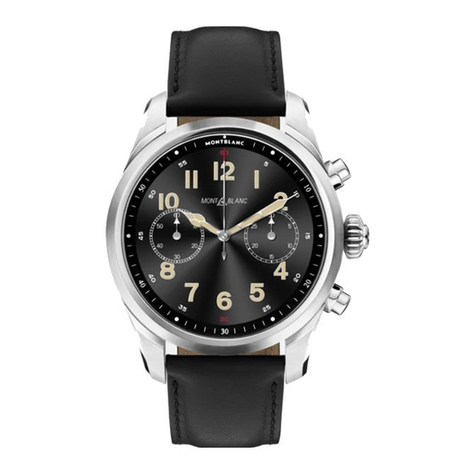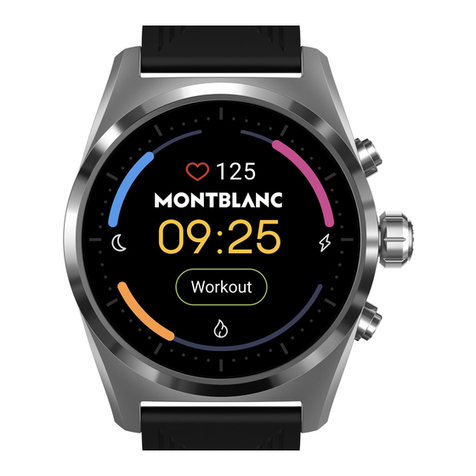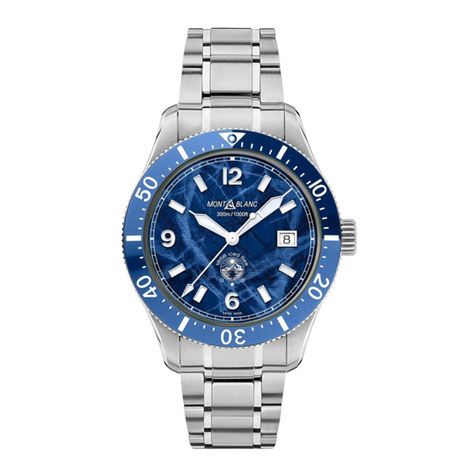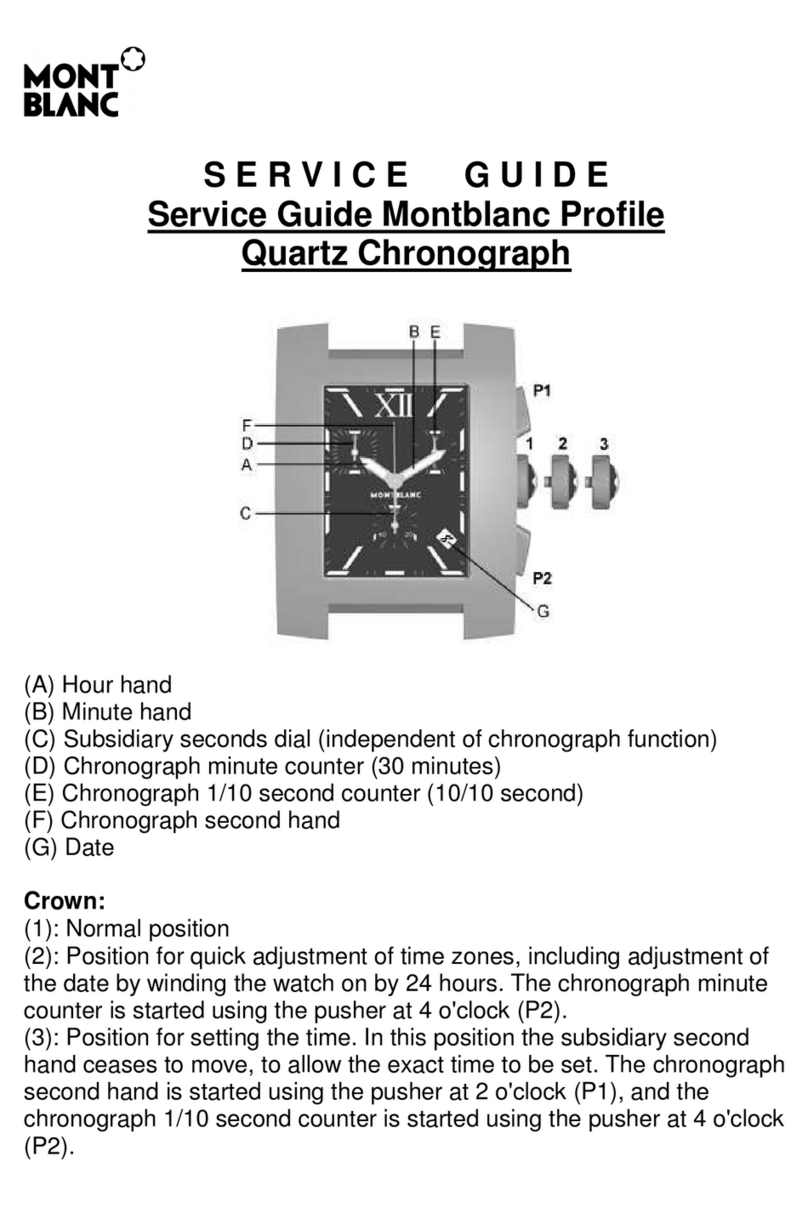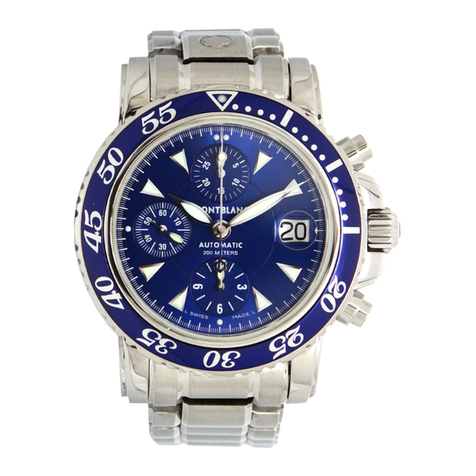
18 19
Crown
1: Running and manual winding position.
To rewind, rotate crown clockwise .
2: Setting the time
Pull the crown out to position 2 to set the time. You can turn the crown in either direction.
Normal chronograph function
a) Starting the chronograph
Press the monopusher (P1) a rst time to set the chronograph direct-drive seconds hand (C) and the
minutes-counter hand (E) in motion.
b) Stopping the chronograph
When you press the monopusher (P1) again, the chronograph hands will stop. Now, you can read the
elapsed time. The chronograph direct-drive seconds hand performs one full revolution in 60 seconds.
When the direct-drive seconds hand passes the 12 o’clock marker, the minutes-counter hand (E) advances
by one graduation (1 minute). It can count up to 30 minutes. To measure longer intervals, make a note of
the number of full revolutions of the minutes-counter hand.
c) Resetting the chronograph to zero
After you have completed the measurement, press the monopusher (P1) a third time to reset the
chronograph direct-drive seconds hand and the minutes-counter hand to zero. This prepares your
chronograph for a new measurement.
Pulsometer display and functions
The pulsometer scale is graduated for 30 pulsations. Start the chronograph function when you begin to
feel the pulse. Stop the chronograph at the thirtieth pulsation. The tip of the direct-drive seconds hand (C)
indicates the point on the pulsometer scale displayed around the dial perimeter which corresponds to the
number of pulsations per minute.
Tachymeter display and functions
The tachymetric scale (F) serves to measure the average speed of a vehicle, for example, over a given distance
(a kilometre or a mile), and the time elapsed. Start the chronograph function at the beginning of the rst
kilometre or mile. Stop the chronograph when you reach the end of the chosen distance. The tip of the direct-
drive hand (C) shows the average speed of the vehicle.
Calibre MB M13.21
Chronographe monopoussoir
Available in the Heritage Spirit collection and 1858
A: Hours hand
B: Minutes hand
C: Chronograph direct-drive seconds hand
D: Continuous seconds hand
E: Minutes-counter hand (30 min)
F: Pulsometer or tachymetric scale
P1: Monopusher
A
E
F
B
C
D
P1
